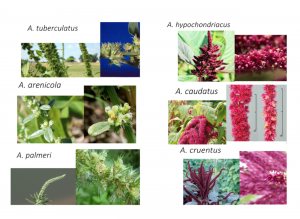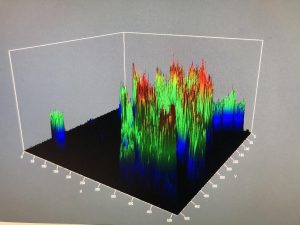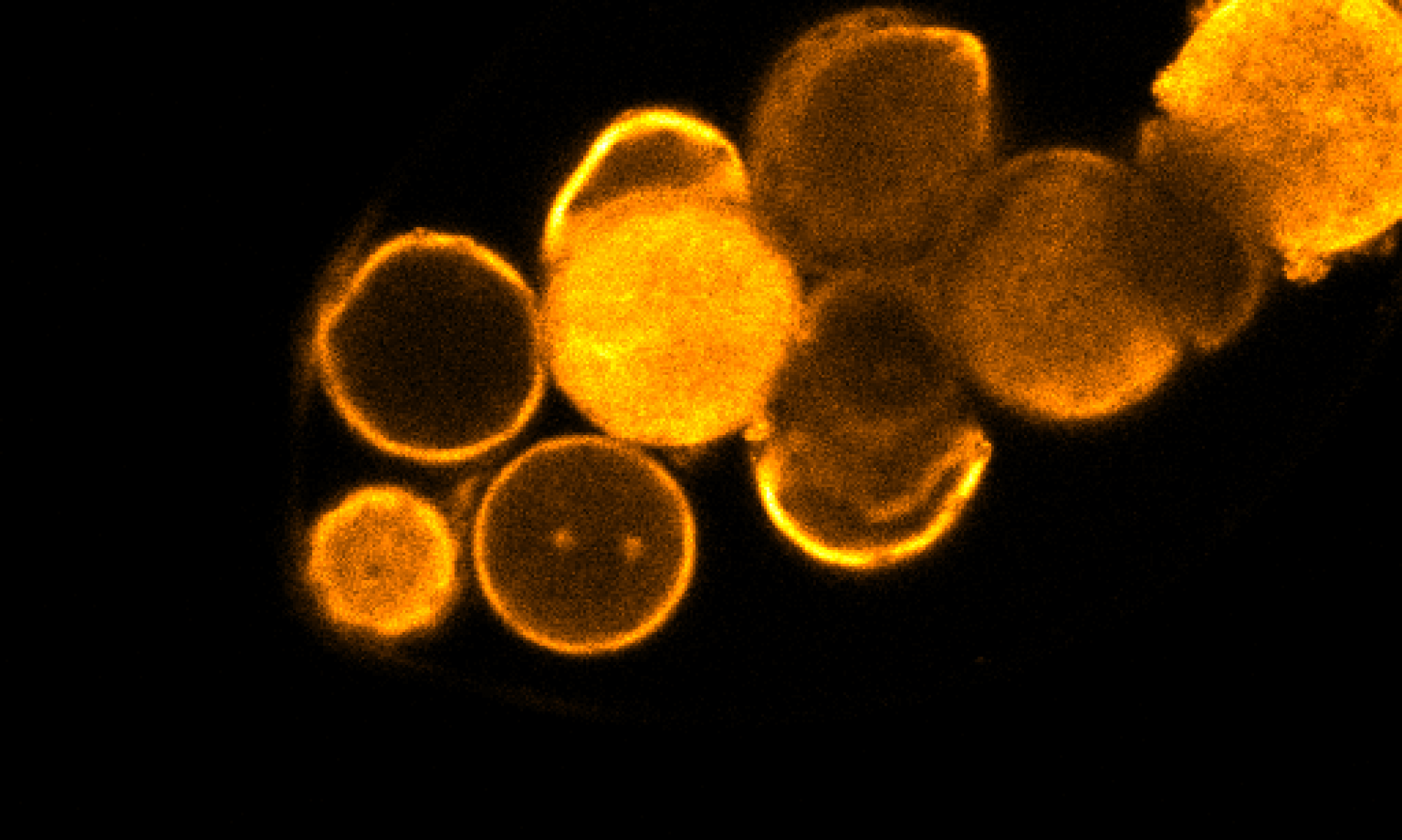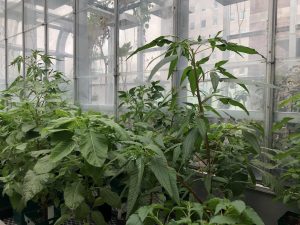Amaranthus is a morphologically diverse genus of flowering plants that is both a nutritional-rich crop and yield-affecting weed dependent on the species and context. Present-day evolution of a dioecious mating system has not been extensively examined at the molecular level. Complex patterns of reproductive compatibility and hybridization have implications for taxonomy and inform mechanism of speciation in Amaranthus.
I.
II.

Figure I. Weeds, cultivars, and hybrids of Amaranthus. (I.) Weedy species of Amaranthus (left) and cultivars (right). (II.) Hybrids from pilot experiment performed at the Eaton Laboratory at the Columbia University greenhouse.
Genetic systems govern the differentiation of male and female floral parts in all organisms. In angiosperms, most sex determination is expressed in morphology of pistillate and staminate flowers with respective floral morphology. Sex-determining loci are highly conserved and often the first of genes to be mapped when constructing linkage maps of species. Genome-wide association studies (GWAS) are used to identify candidate loci in genomes to make genotypic and phenotypic inferences. Jasmina is performing a GWAS to identify sex loci in dioecious Amaranthus. The loci, structures, and homology between male and female sequences within and between species will provide insight into the genetic mechanisms of sex determination and evolution of dioecy.

Pollen viability is used as a measurement of genetic distance and reproductive compatibility between species. Jasmina is using 4′,6-diamidino-2-phenylindole (DAPI) and Reactive Oxygen Species (ROS) fluorescent dies to stain pollen to measure fluorescence as an indicator of viability. Cell imagining is performed using the LSM 700 laser scanning confocal microscope with a variable dichromatic mirror that enables spectral imaging coupled with linear unmixing to untangle highly overlapping emission spectra. The overlapped spectra emits signature wavelengths produced by absorbed fluorophores that reemit light upon excitement.

These fluorophores are observed across a gradient of spectral emission to observe heterogeneous concentrations of adenine-thymine rich regions of DNA and oxygen reactants present in haploid pollen grains. Approximations of pollen viability are based on the brilliance of each pixel in each grain relative to each other in the sample. Gradient filters in cellular imagining are used to measure the brilliance of each pixel in each grain to set a threshold of viability.

Fluoresced regions of 4′,6-diamidino-2-phenylindole illustrate regions of relatively high concentrations of DNA content compared to less brilliant grains or cells. Lastly, Jasmina processes the Ziess cellular photographs in Zenn software to create 2-D maps of spectral emissions to approximate haploid viability.


